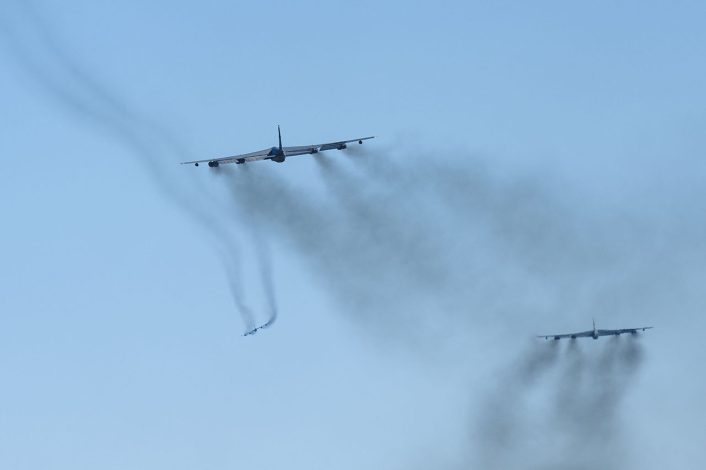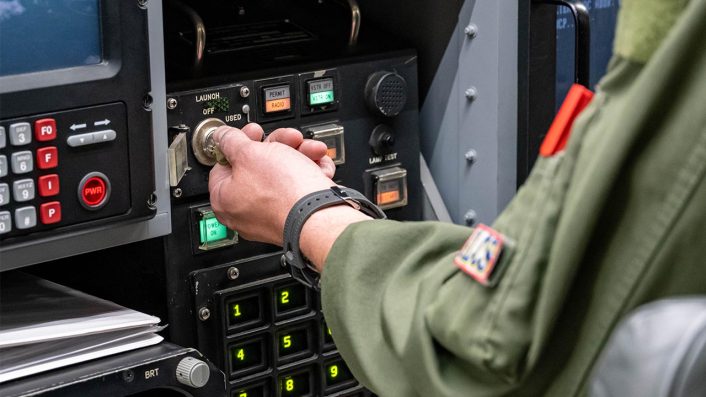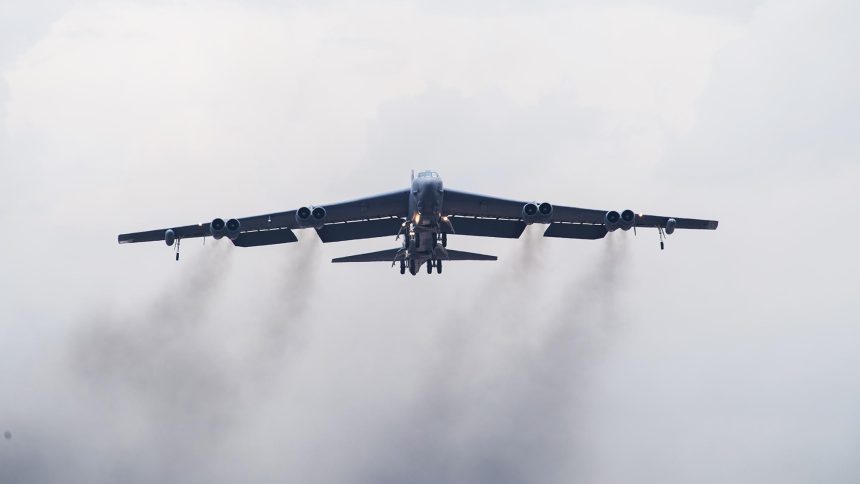U.S. Strategic Command has begun this year’s edition of the annual nuclear command & control exercise known as Global Thunder.
As we mentioned in last month’s article on what is believed to have been a ‘Skymaster exercise’, the annual Exercise Global Thunder was expected to take place, as usual, in October or November 2025. We now have confirmation from U.S. Strategic Command, or STRATCOM, that Global Thunder 26 officially commenced on Oct. 21, 2025.
Global Thunder exercises, along with the sister Global Lightning exercises that usually take place in the Spring, are large-scale training regimes that see U.S. strategic forces as well as additional units, and occasionally a contingent of allied forces, simulate the build-up to and execution of a nuclear war scenario. To reinforce the closeness of the simulation to a real world event, concurrent exercises see the rehearsal of logistics tasks, airfield defence, and even casualty management.
Strategic nuclear bombers, namely B-52 Stratofortresses and B-2 Spirits, are one of the most prominent parts of Global Thunder exercises. Mass scrambles will see aircraft practice minimum interval take-off (MITO) procedures, in the case of the B-52 leaving the skies above full of thick, dark smoke trails. Command and control aircraft, the E-6B Mercury TACAMO birds from the U.S. Navy and the U.S. Air Force’s own E-4B Nightwatch fleet act as they would in a real war, issuing commands via Emergency Action Messages (EAMs) transmitted across a range of frequencies and communication methods. Tanker aircraft, supporting all the other players, also conduct mass launches just as they would in the real operational plan.

The Minuteman III intercontinental ballistic missile (ICBM) fields across vast swathes of the United States will take part silently, the crews underground receiving their simulated orders and conducting simulated launches of their nuclear missiles without any indication to the outside world of what’s occurring down below. If, in the scenario, the launch control centres (LCCs) that control groups of these missiles have already been destroyed, the ICBMs can be remotely fired from E-6B aircraft.

Similarly, U.S. Navy personnel often join the exercise on board one of fourteen Ohio class ballistic missile submarines, a number of which are always on patrol and prepared to be called upon to launch up to 20 Trident II D5 ICBMs, carrying hundreds of individually targeted nuclear warheads. Orders for these submarines will come from E-6Bs flying tight spiral patterns in designated zones over the sea, trailing behind them two antenna wires. One of these will stretch from the aircraft almost to the surface of the water.
This system allows for the transmission of very low frequency (VLF) communications which can not only travel significant distances but also penetrate to a certain depth below water, allowing submerged submarines to receive messages including firing orders and authorization codes without revealing their position.
COST 43 (E-6B TACAMO) broadcasting a EAM on VLF over the North Atlantic this morning. 💪😎🇺🇸 pic.twitter.com/MwlcrhpP3x
— Thenewarea51 (@thenewarea51) September 24, 2025
Additional U.S. Navy forces, including Carrier Strike Groups (CSGs), are sometimes called upon to join nuclear command & control exercises in support of SSBN taskings. U.S. Navy aircraft carriers themselves once carried tactical nuclear weapons in their vast inventories, though this practice is understood to have ceased in the 1990s. Neither the F/A-18E/F Super Hornet nor the F-35C Lightning II which form the bulk of a CSG’s strike force have been certified to carry B61 nuclear bombs.
As the exercise progresses through the build-up, and past the stage of weapon launches (on both friendly and hostile sides), individual units, including ground stations such as the Headquarters of Air Force Global Strike Command (AFGSC) at Barksdale Air Force Base – callsign RED RIVER – will cease to function as part of the exercise, simulating their destruction by nuclear detonation.
During some exercises, the destruction of the entire High Frequency Global Communications System (HFGCS) ground network – callsign MAINSAIL – has been simulated, with personnel only able to provide their services to real-world traffic.
MAINSAIL has been destroyed, so did this E6 just broadcast authorization codes to take over as the HFGCS master control…? https://t.co/IdgJUNov16 pic.twitter.com/molxSieYi2
— NEET INTEL (@neetintel) August 20, 2025
Both Barksdale and Minot AFBs are expected to take part with their B-52 squadrons. Minot is open 24/7 until Oct. 29, while Barksdale has been listed as open for “aerodrome official business” only for the same period. This time period fits with the usual duration of Global Thunder – between one and two weeks.
Exercise time. NOTAMS: Minot AFB is open 24/7 now till the 29th. Barksdale AFB is closed till the 29th (but open for official business. Multiple 24 hr airspace reservations for the E-6B TACAMO in the Atlantic and Pacific. pic.twitter.com/YEENOgM4LJ
— Thenewarea51 (@thenewarea51) October 20, 2025
Wider Picture
Global Thunder and Global Lightning often carry with them an increase in sensationalist reporting on social media, owing to the increased movements of strategic forces in a manner, by design, resembling a war plan. The U.S., its allies, and other nations like Russia and China conduct nuclear command and control exercises on a routine basis, and they should not be taken as a suggestion that nuclear war is in any way imminent.
However, they do intentionally constitute a level of signalling to adversaries on the global stage regarding nuclear readiness and intent. For this reason, the exercises are also commonly referred to as ‘deterrence’ exercises, forming part of the overall nuclear deterrence posture by reinforcing the fact nuclear forces remain alert and constantly geared for action.
The beginning of Global Thunder this week follows the wider NATO nuclear exercise Steadfast Noon, which kicked off on Oct. 13 and runs through to Oct. 24. Though sometimes involving U.S. strategic bomber forces, the primary focus of Steadfast Noon is the rehearsal of NATO’s delivery of tactical nuclear weapons forward deployed by the U.S. in Europe for use by American and allied fighter aircraft.
2025’s edition of Steadfast Noon is the first where F-35A Lightning IIs have taken the lead, as many of the NATO air arms with the responsibility of deploying these B61 air-dropped weapons have now taken delivery of an operational force of the fifth generation multi-role fighters.









